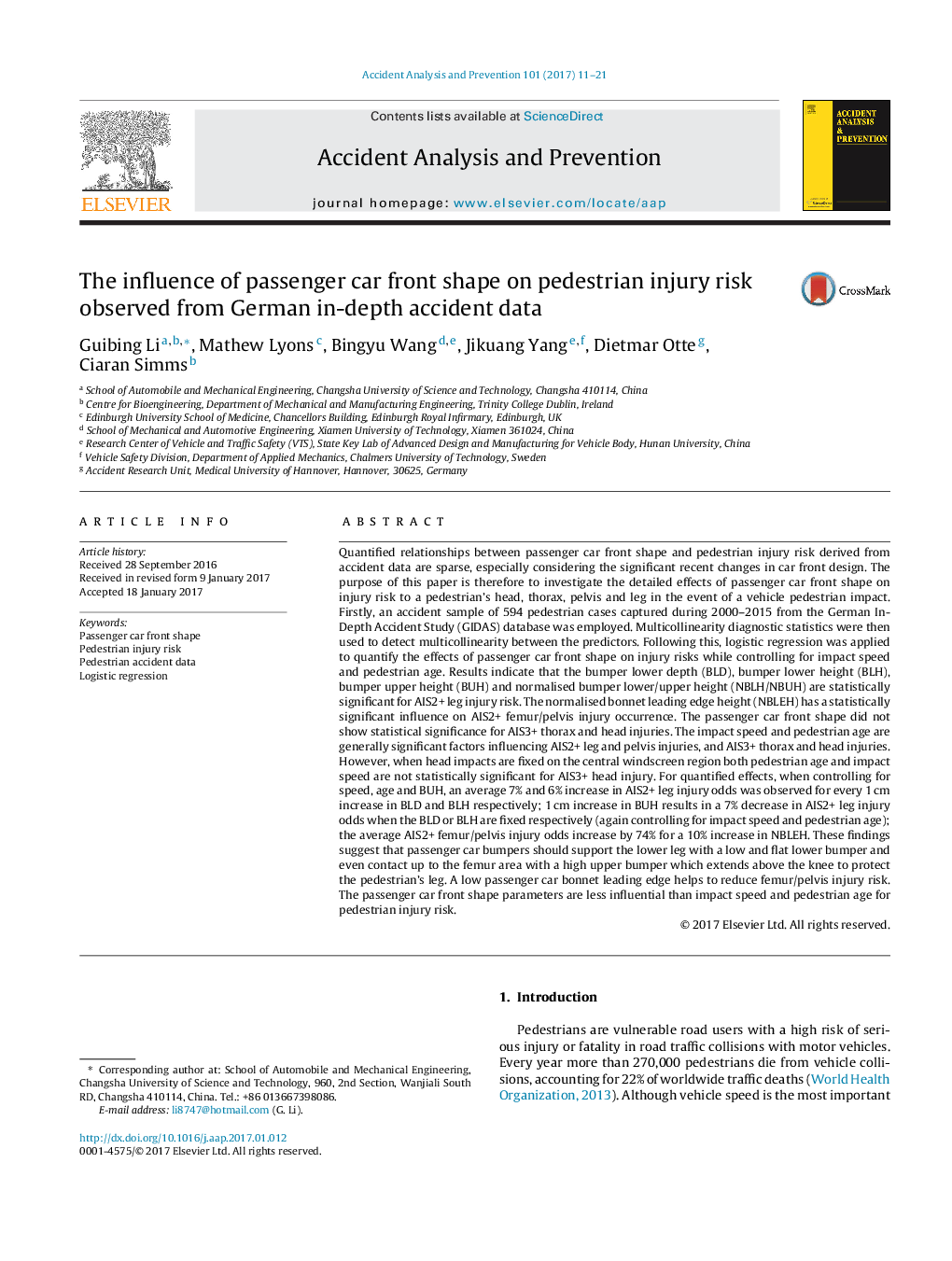| Article ID | Journal | Published Year | Pages | File Type |
|---|---|---|---|---|
| 4978719 | Accident Analysis & Prevention | 2017 | 11 Pages |
Abstract
Quantified relationships between passenger car front shape and pedestrian injury risk derived from accident data are sparse, especially considering the significant recent changes in car front design. The purpose of this paper is therefore to investigate the detailed effects of passenger car front shape on injury risk to a pedestrian's head, thorax, pelvis and leg in the event of a vehicle pedestrian impact. Firstly, an accident sample of 594 pedestrian cases captured during 2000-2015 from the German In-Depth Accident Study (GIDAS) database was employed. Multicollinearity diagnostic statistics were then used to detect multicollinearity between the predictors. Following this, logistic regression was applied to quantify the effects of passenger car front shape on injury risks while controlling for impact speed and pedestrian age. Results indicate that the bumper lower depth (BLD), bumper lower height (BLH), bumper upper height (BUH) and normalised bumper lower/upper height (NBLH/NBUH) are statistically significant for AIS2+ leg injury risk. The normalised bonnet leading edge height (NBLEH) has a statistically significant influence on AIS2+ femur/pelvis injury occurrence. The passenger car front shape did not show statistical significance for AIS3+ thorax and head injuries. The impact speed and pedestrian age are generally significant factors influencing AIS2+ leg and pelvis injuries, and AIS3+ thorax and head injuries. However, when head impacts are fixed on the central windscreen region both pedestrian age and impact speed are not statistically significant for AIS3+ head injury. For quantified effects, when controlling for speed, age and BUH, an average 7% and 6% increase in AIS2+ leg injury odds was observed for every 1Â cm increase in BLD and BLH respectively; 1Â cm increase in BUH results in a 7% decrease in AIS2+ leg injury odds when the BLD or BLH are fixed respectively (again controlling for impact speed and pedestrian age); the average AIS2+ femur/pelvis injury odds increase by 74% for a 10% increase in NBLEH. These findings suggest that passenger car bumpers should support the lower leg with a low and flat lower bumper and even contact up to the femur area with a high upper bumper which extends above the knee to protect the pedestrian's leg. A low passenger car bonnet leading edge helps to reduce femur/pelvis injury risk. The passenger car front shape parameters are less influential than impact speed and pedestrian age for pedestrian injury risk.
Keywords
Related Topics
Physical Sciences and Engineering
Chemical Engineering
Chemical Health and Safety
Authors
Guibing Li, Mathew Lyons, Bingyu Wang, Jikuang Yang, Dietmar Otte, Ciaran Simms,
